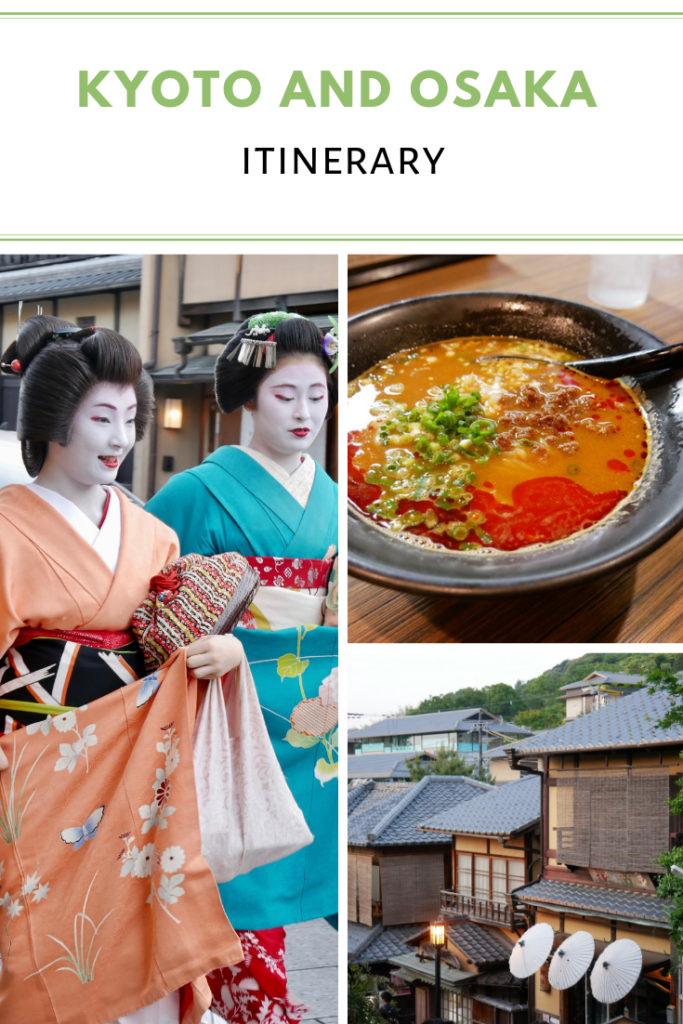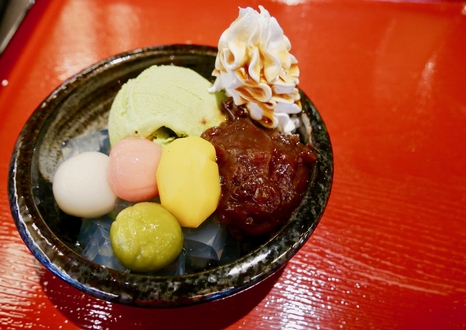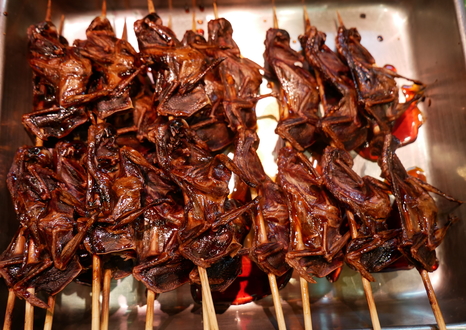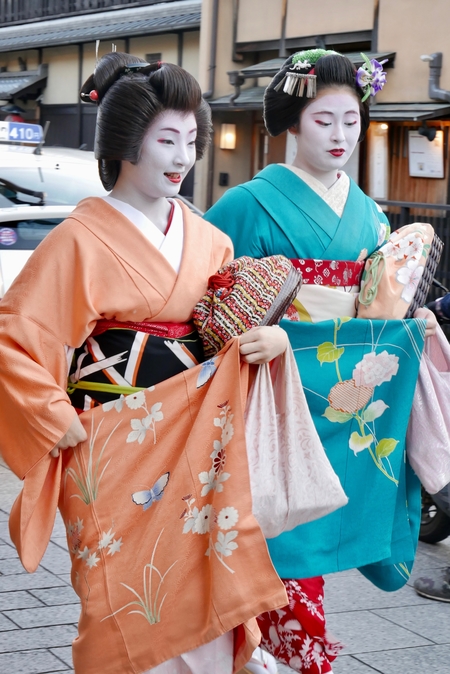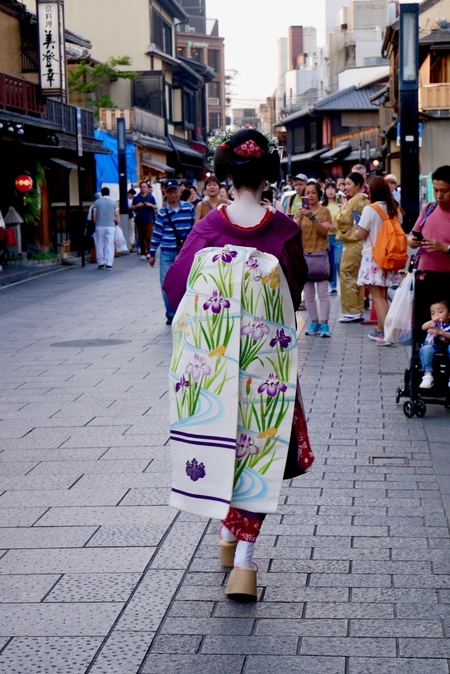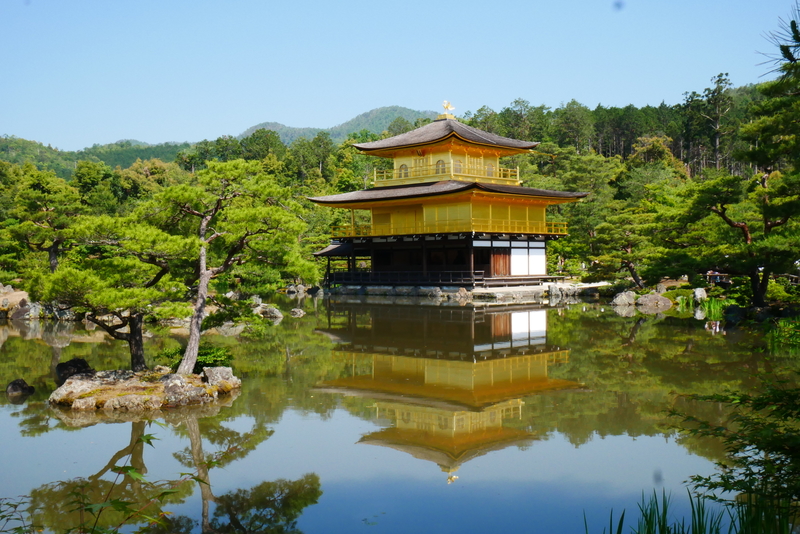
Three Day Kyoto and Osaka Itinerary
Japan’s Kansai Region represents the country in a nutshell.
Home to atmospheric temples and colorful flashing billboards, the beautiful region on Honshu Island contains both the modern comforts and culinary delights of urban Japan, as well as the nostalgic charm of the country’s hinterland.
Kansai’s two largest cities—Osaka and Kyoto—offer the perfect introduction to Japan. Together, the cities reveal a country of quirks and contrasts, while showcasing the rich history and modern impulses that contribute to Japan’s layered and widespread appeal.
Though I only had a short weekend to spend in Japan, my three day Kyoto and Osaka itinerary revealed some of the country’s most spectacular highlights and caused me to fall in love, once again, with the Land of the Rising Sun.
Our Three Day Japan Itinerary
Dan and I spent three days in Japan, excluding travel time. Due to the brevity of our visit, we chose to skip Tokyo and focused our itinerary on Kyoto and Osaka instead.
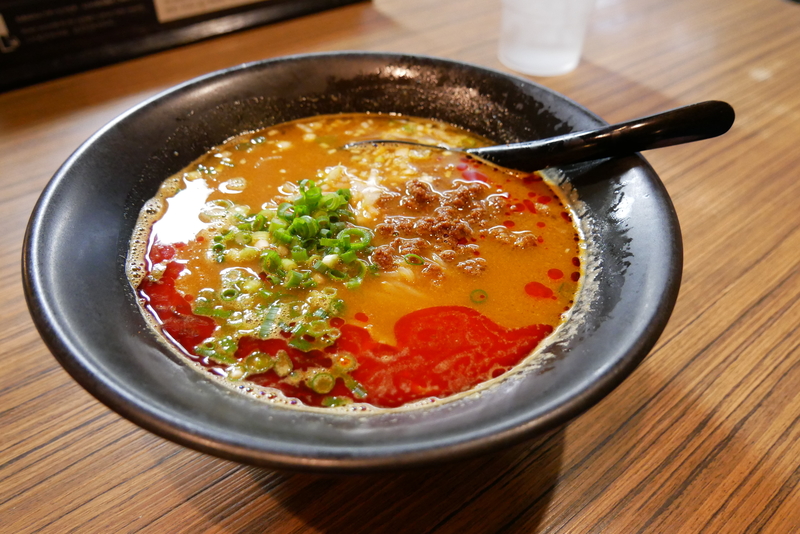
I’d visited Kyoto once before, during a high school exchange in 2007. Since my exchange, I’d hoped to return to the city to revisit its temple-laden streets and peel back its history.
Yet travel plans always seemed to bring me elsewhere. It wasn’t until twelve years later, over a long holiday weekend in May, that I finally took the opportunity to return to Kyoto with Dan.
Dan and I split our three day Japan itinerary between Kyoto and Osaka—spending two days temple-hopping in the former, and a day indulging in the culinary delicacies of the latter.
While in Kyoto, we stayed at the Nagomi Ryokan-Yuu in order to experience a traditional Japanese-style guesthouse. The ryokan was centrally located, clean, affordable and within spitting distance of the delectable Ginjo Ramen Kubota.
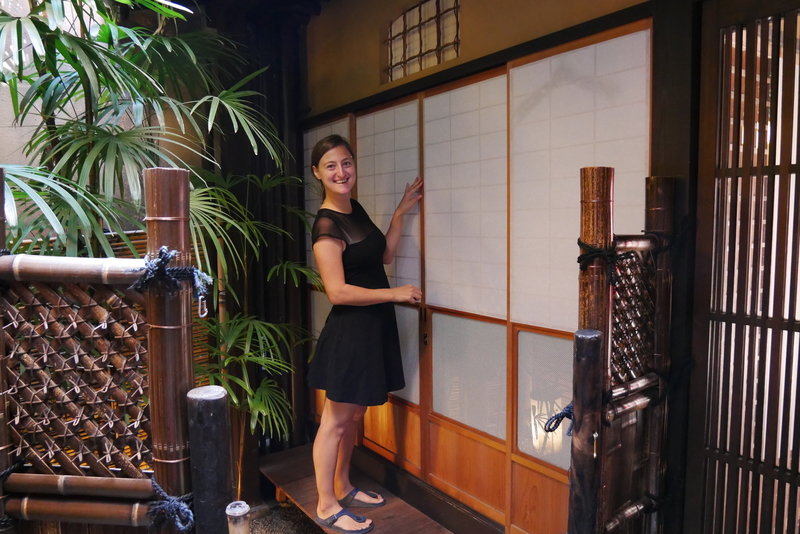
For the last day of our whirlwind itinerary, we stayed at the Yamatoya Honten Ryokan, near Osaka’s buzzing Dotombori district. It, too, contained everything we needed for a relaxing and enjoyable stay.
Kyoto Itinerary Day 1: Highlights of Japan’s Cultural Capital
There is no doubt that Kyoto is Japan’s cultural capital and spiritual heart. It is a city in which geisha shuffle between appointments, prayer chants resonate through peaceful gardens, and picturesque streets hearken back to the days of old.
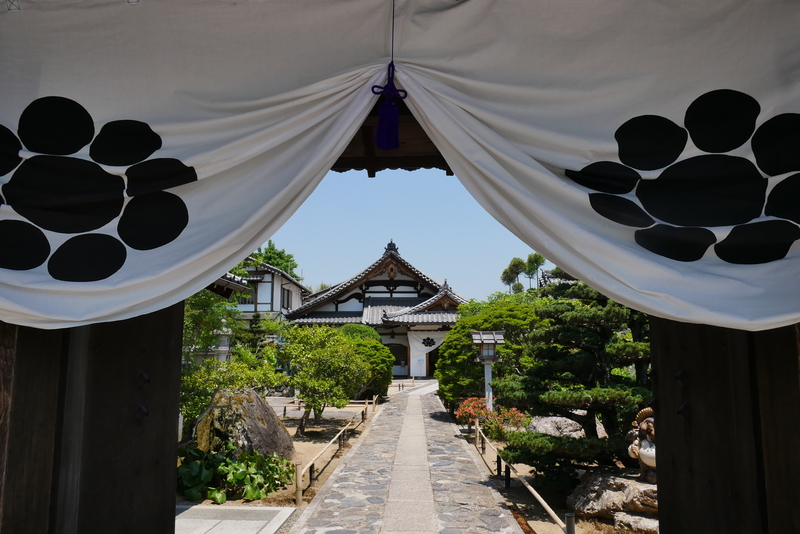
While the rest of Japan has adopted modernity with abandon, Kyoto still celebrates its heritage and clings to its past. The elegant imperial city is one of the most beautiful in Asia. It houses an unparalleled wealth of monuments, including a whopping 17 UNESCO World Heritage Sites and many of Japan’s most beloved icons.
-
The Golden Pavilion
The Kinkaku-Ji Temple (also known as the Golden Temple or Golden Pavilion) is the symbol of Kyoto and one of the most iconic images of Japan. It is often the highlight of Kyoto tourist itineraries.
The Golden Pavilion lies in the northwest corner of Kyoto, tucked amongst a verdant forest. The main hall of the temple complex, covered in brilliant gold leaf, casts its shimmering reflection onto an adjacent pond. At once splendid in its opulence and simple in its design, the pretty pavilion wows visitors with its delicacy
Since the Golden Pavilion is one of Kyoto’s most popular temples, I wanted to arrive early to beat the crowds. From the Kyoto Station, Dan and I hopped on bus #205 and arrived shortly after the temple’s opening time. When we arrived, however, the line already wrapped down the street. Though we were early, we realized that visiting the temple crowd-free would be an impossible feat.
Reluctantly, we joined the end of the queue and waited to pay the Y400 entrance fee.

The temple was certainly worth the wait.
The Golden Pavilion is simply stunning. Not even the crowds of tourists—numbering in the thousands—could detract from its shimmering brilliance.
-
The Arashiyama Bamboo Grove
Arashiyama is one of Kyoto’s most popular sightseeing districts. Filled with temples and shrines and a popular bamboo forest, the pretty district in western Kyoto merits a half day of exploration.
When I visited Kyoto in 2007, I did not stop in Arashiyama. In fact, I didn’t even know the place existed. Yet in recent years, I began seeing images of the swaying bamboo stalks everywhere—in Instagram feeds, in travel brochures and even in advertisements.
The Arashiyama Bamboo Grove has exploded in popularity over the recent years thanks, in large part, to social media.
And while I try not to let Instagram trends influence where I choose to travel, I dragged Dan to Arashiyama in order to see what all the fuss was about.
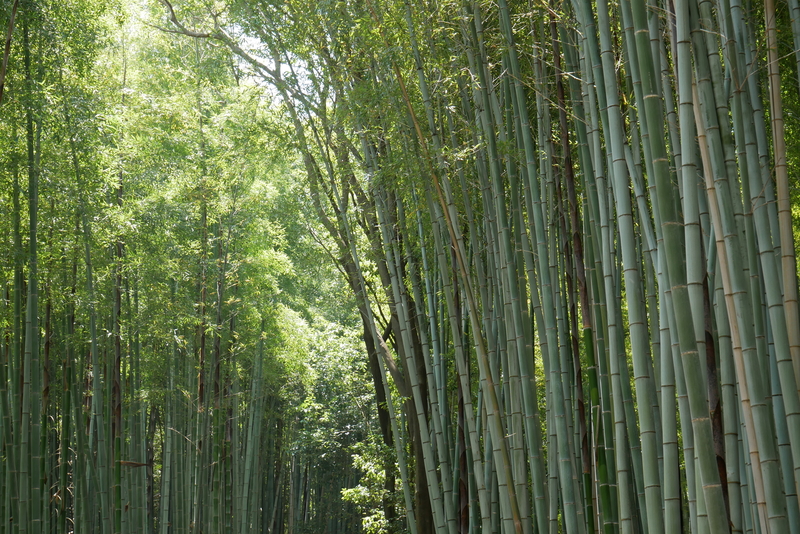
Like the Golden Pavilion, Arashiyama is worthy of its renown. The grove’s graceful bamboo pillars stretch toward the sky, rustling back and forth in the breeze and casting patterns of dappled light on the area’s pathways.
If I could go back, however, I would have stopped at Arashiyama early in the morning, en-route to the Golden Pavilion. The Arashiyama Bamboo Grove is best explored at dawn, before throngs of visitors inundate the forest with their selfie sticks and curated poses.
While Arashiyama’s bamboo forest is undoubtedly the most popular thing to see in the area, it certainly isn’t the only notable destination in Arashiyama. One could spend an entire day in the area—exploring its maze of temples, floating down the Katsura River by boat, and watching life unfold from the Togetsukyo Bridge.
-
The Nijo Castle
The Nijo Castle dominates a large part of Northwest Kyoto. Built in 1603 as the official residence of the city’s Tokugawa shogun, the imposing structure was meant to demonstrate prestige.
The most noteworthy attraction on the Nijo Castle grounds is the spectacular Karamon Gate. Intricately adorned in golden motifs, the wooden gate is one of Kyoto’s finest examples of artisanship.
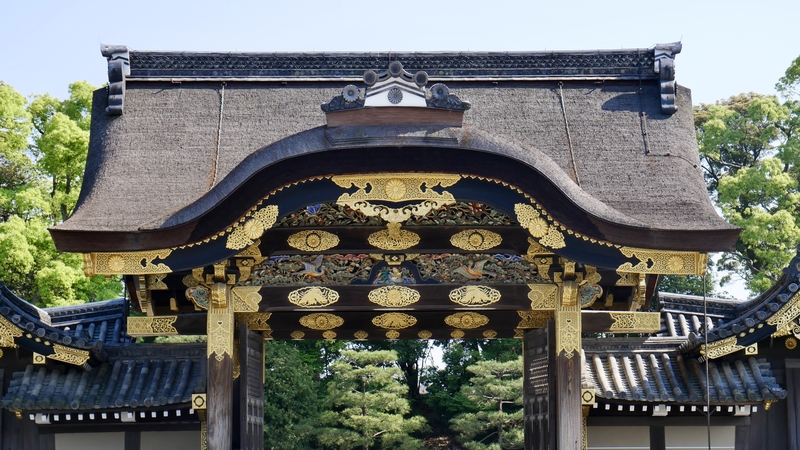
The Nijo Castle complex is divided into five principal buildings. The fourth chamber contains spectacular golden screen paintings that showcase the delicate sophistication of Japanese art.
Photography of the screen paintings is, unfortunately, prohibited.
-
The Nishiki Market
After soaking in three of Kyoto’s most important sites and completely skipping out on lunch, Dan and I were ravenous. We decided to take a bus from the Nijo Castle to the Nishiki Market for dinner.
The Nishiki Market—also known as Kyoto’s Kitchen— is a favorite spot for locals and tourists alike. Filled with souvenir stalls, street food, cafes, restaurants and matcha shops, the sprawling covered market is Kyoto’s top foodie hotspot and a great place to sample the city’s local delicacies.
Kyoto Day 2: A Taste of Traditional Japan
On the following day, Dan and I continued our quest to discover Kyoto’s most beautiful religious monuments. We began our day with a hike around the grounds of the sprawling Fushimi Inari Shrine. In the afternoon, we explored the traditional streets and alleyways that serve as a peephole into Kyoto’s past.
-
The Fushimi Inari Shrine
With a seemingly endless string of orange torii gates spread across a thickly wooded mountainside, the Fushimi Inari Shrine represents a one-of-a-kind temple-going experience. The shrine is, quite simply, one of the most impressive places to visit in Japan and a must-see staple of any Kyoto itinerary.
And better yet, the Fushimi Inari Shrine doesn’t cost any money to visit.
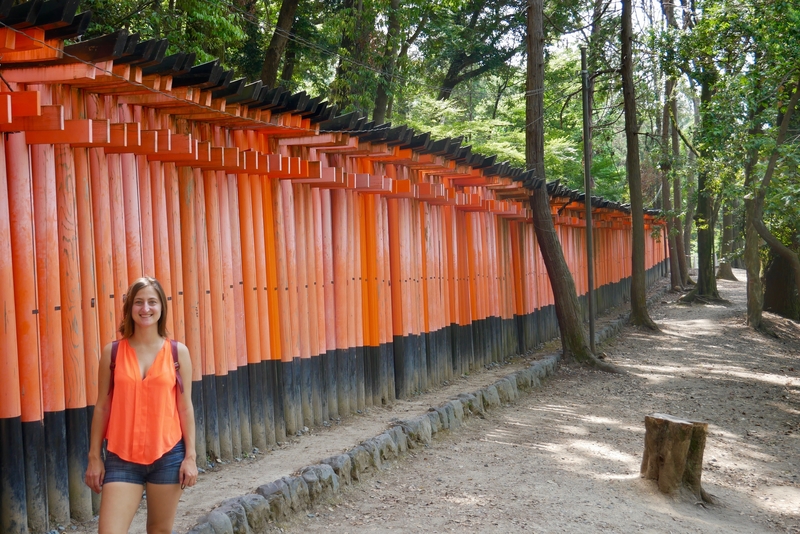
The entire religious complex sprawls across the wooded slopes of Inari Mountain. A path wanders 4 kilometers up the mountain, sheltered by thousands of vermillion archways. It is a beautiful shaded area that consists of dozens of trails, alters and small sub-shrines.
We spent a few hours exploring Fushimi Inari during the morning of our second day in Kyoto. And, had we not decided to proceed to some of Kyoto’s other must-see attractions, we could have probably spent the whole day hiking around Inari’s orange-speckled slopes.
-
Kyoto’s Gion District
From the Fushimi Inari Shrine, we took the Keihan Main Line to Gion. There, we turned back the clock and found ourselves meandering down the narrow lanes of Medieval Japan.
Gion is one of Kyoto’s most beautiful neighborhoods. The picturesque district dates back to the Middle Ages. It is one of the top places to visit in Kyoto and, by far, the most famous geisha district in Japan.
In Gion, it is not uncommon to see geisha shuffling along narrow streets, flitting to and from their latest appointments.
Packed with bars, restaurants and traditional teahouses, Gion lies between the Nishiki Market and Yasaka Pagoda. Some of Gion’s most picturesque strolling spots include Hanami Lane, Shijo Dori and the Shirakawa Canal.
A visit to the area is best combined with a walk through the nearby Higashiyama District between the Yasaka Shrine and Kiyomizu-dera Temple.
-
The Higashiyama District
The Higashiyama District lies along the lower slopes of Kyoto’s eastern mountains. Like nearby Gion, it is one of the city’s best preserved historic districts.
Small shops, cafes and restaurants line Higashiyama’s pretty streets. Its businesses retain their centuries-old designs and entice customers with delectable sweets, local handicrafts and Japanese curiosities.
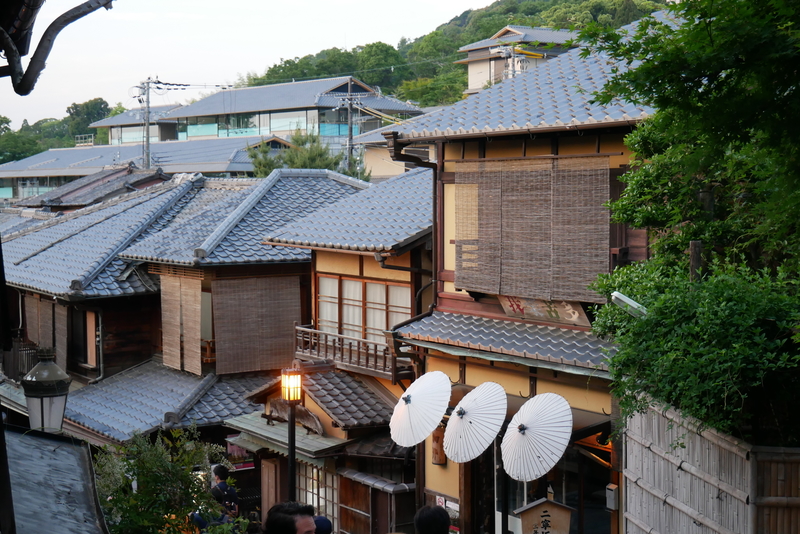
The Yasaka Pagoda is a defining landmark that lies between Gion and the Higashiyama District. From the pagoda, a well-preserved walk leads to the sprawling Maruyama Park in one direction, and the iconic Kiyomizu-Dera temple in the other.
-
The Kiyomizu-Dera Temple
A buzzing hive of activity perched on a hill overlooking Kyoto, Kiyomizu-Dera is one of the city’s most important temples. As with the impressive Orthodox cathedral in Karakol, Kyrgyzstan, the temple was built without the use of a single nail.
Kiyomizu-Dera’s main hall contains a verandah that juts out over the hillside. Below its main hall is a fountain from which visitors can drink water and pray for longevity and good fortune.
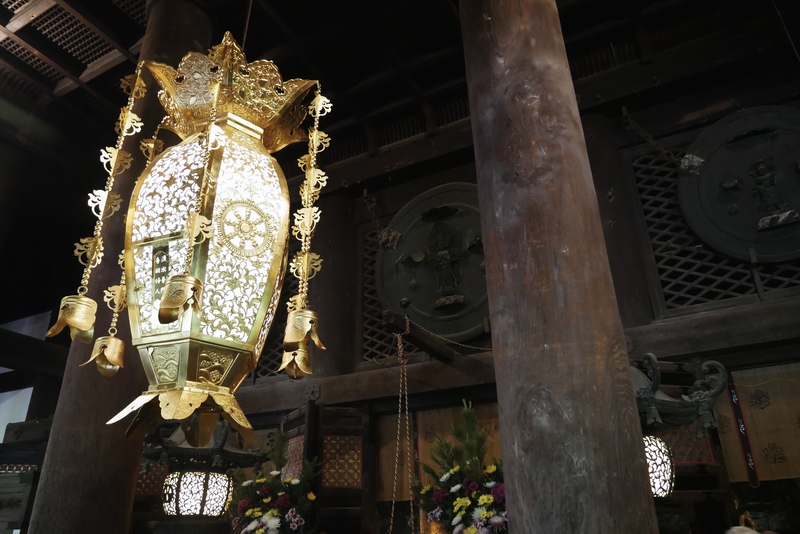
I distinctly remember visiting Kiyomizu-Dera twelve years ago and soaking in the aerial views of Kyoto from its reinforced wooden balcony.
When I visited the temple on my most recent trip to Kyoto, however, the main temple structure was unfortunately wrapped in scaffolding.
Nonetheless, visiting Kiyomizu-Dera was well worth the Y300 entrance fee.
Japan Itinerary Day 3: Exploring Osaka
Osaka is the second largest city in Japan. While it doesn’t have the same high concentration of UNESCO sites and cultural gems that can be found in Kyoto, the cosmopolitan city is well known for its nightlife, business districts and incredible street food. Osaka is Japan’s food capital writ large, boasting an overwhelming number of mouthwatering culinary delicacies.
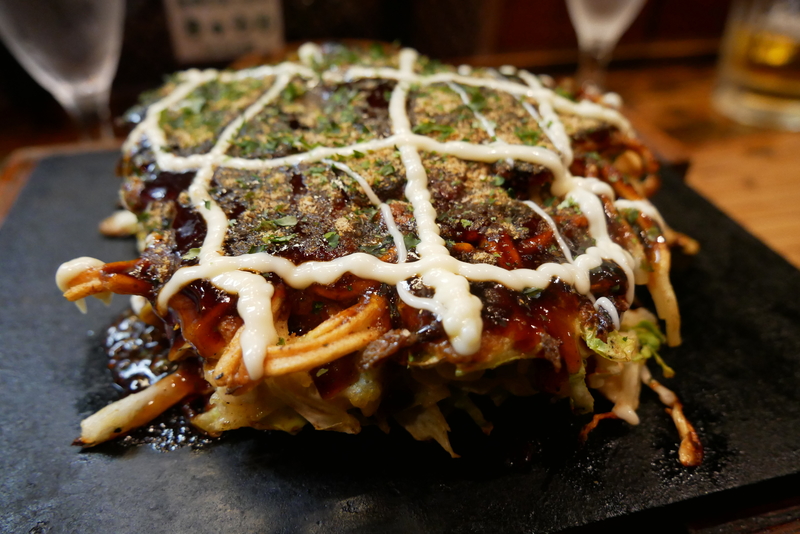
Osaka is not pretty in the conventional sense, but it packs more color than most cities—exhibiting vibrant pedestrian walkways and concrete buildings blanketed in flashy neon signage.
As with Kyoto, I could have spent the entirety of my Japan vacation in Osaka and still found plentiful things to do and foods to eat. With only one day, however, I decided to divide my time between the colorful foodie paradise of Dotombori, and the magnificent Osaka Castle in the Chuo-Ku District.
-
The Osaka Castle
The Osaka Castle has become a symbol of Japan. It is, without a doubt, the top place to visit in Osaka.
After unifying Japan in the late 1500s, General Toyotomi Hideyoshi built this grand castle alongside 100,000 workers. And though the present structure is a 1931 concrete reconstruction of the original, the current castle is nonetheless an impressive site to behold.
The five-story building sits in the middle of a large park and looms dramatically over Osaka’s surrounding cityscape.
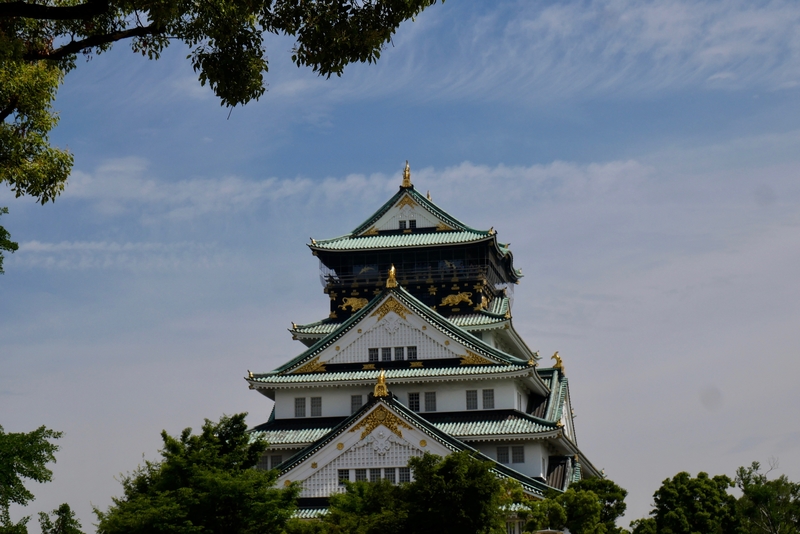
The entire Osaka Castle Park covers about two square kilometers in the northern part of the city. The park contains sports facilities and vast areas of green space. During the springtime, it is one of Osaka’s most popular places for hanami-viewing.
-
Street Food and Neon Lights in Dotombori
Dan and I ended our Kyoto and Osaka itinerary with a stroll through the dynamic Dotombori District.
Highly photogenic Dotombori contains a large concentration of Osaka’s foodie hotspots. It is a lively area, made all the more atmospheric at night, when it is illuminated in flashing neon signs that resemble parts of Tokyo, Hong Kong, New York and Seoul.
A 400-year-old canal cuts through the flashy district. At night, illuminated billboards (including that of the famous Gilco Running Man) emit a show of lights that glitter off its waters.
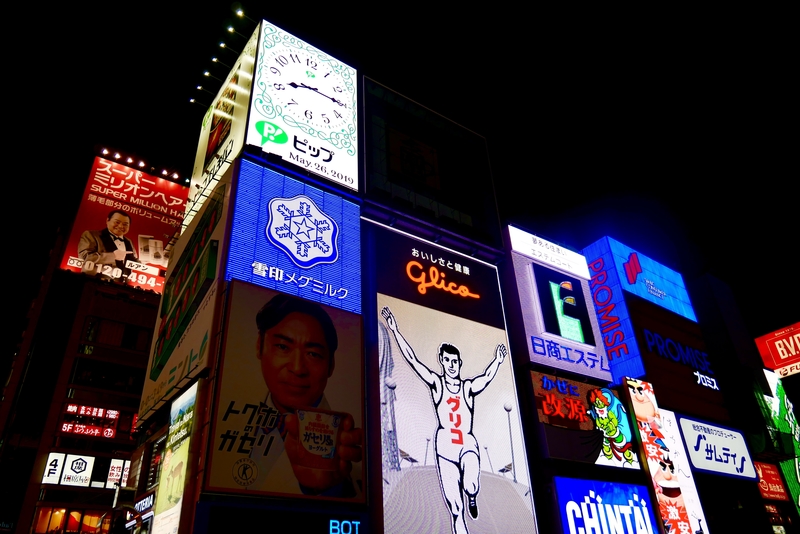
Heeding the advice of multiple blogs and travel guides, we explored the district with empty stomachs and put our taste buds to work. We ate okonomiyaki along one of Dotombori’s hole-in-the-wall side streets, sampled takoyaki from kukuru and snacked on an assortment of Osaka-style skewers at Kushikatsu Gokakuya.
I wish I could have eaten without getting full, because the food options in Osaka kept my mouth watering long after I’d stuffed my stomach to the brim.
***
My three day Kyoto and Osaka itinerary allowed me to experience some of Japan’s best offerings in limited time. From iconic landmarks and world heritage sites to tantalizing food and vibrant culture, Kansai’s two largest cities gave me insight into the contrasting forces at play in this modern, yet deeply traditional, country.
And in doing so, they all but convinced me to begin planning my return trip to the area.
___________________________
Additional Kyoto and Osaka Itinerary Tips
- There are multiple ways to travel between Kyoto and Osaka. The shinkansen (Y1420) is the fastest option, taking approximately 15 minutes. Other options include the JR Train (Y560, 30 minutes) and a bus that travels between Kyoto Station and Osaka’s Universal City Station (Y900).
- Visiting Kyoto and Osaka is best in the Spring and Fall, when weather is pleasant and mild. Summers in Japan can get unbearably hot, while winters tend to be quite cold.
_______________________________
Like this Osaka and Kyoto Itinerary? Pin it!
